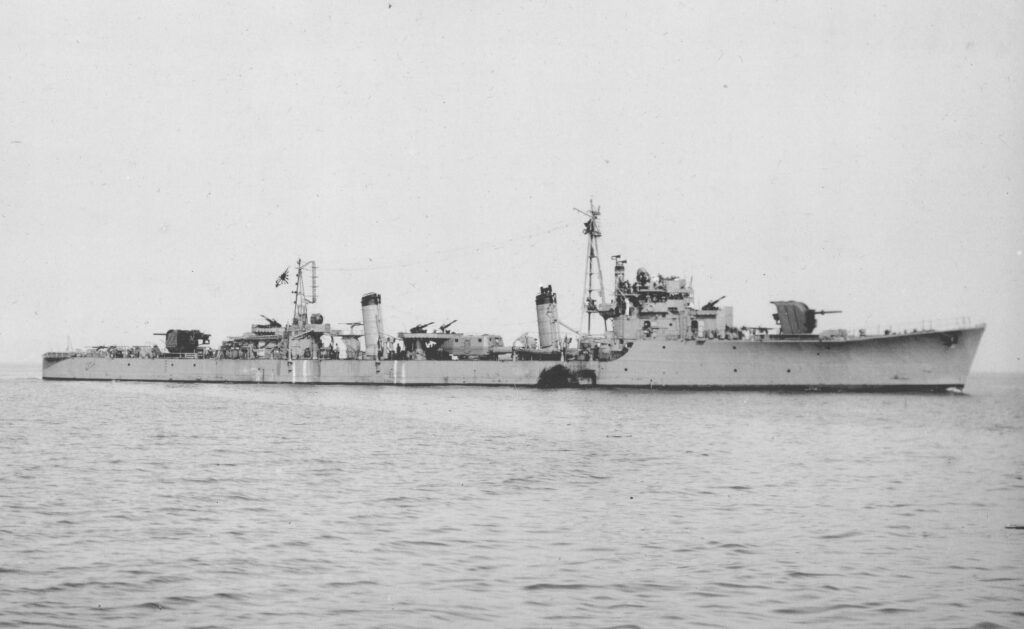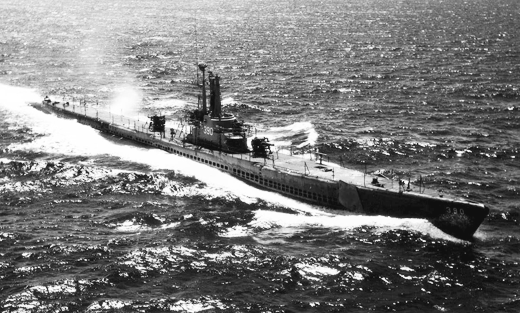An interactive map of locations involved in the ditching and rescue of a 501st Bomb Squadron B-25 crew on August 10-11, 1945.
To finish off a shipping sweep in the Sea of Japan, the 501st Bomb Squadron of the 345th Bomb Group split into three flights of three B-25s as they reached the island of Tsushima on August 10, 1945. Each flight would cover different parts of the shoreline, looking for targets of opportunity, as they returned to their base on Ie Shima.
Lt. Earl Wilkinson led the second flight and flew over a two stack destroyer that was heavily camoflaged and tucked into a cove in the maze of waterways that split the two halves of the island. The destroyer was only noticed once it began firing at their flight and they circled back to make their mast height attacks against it. The terrain was such that they had to make individual west-to-east runs instead of as a lead ship with supporting wingmen.

First over the target, Lt. Wilkinson started taking fire and hits from the destroyer’s many anti-aircraft guns as soon as he topped a cliff and received at least ten bursts in his right wing and had half the top turret dome shot away before dropping his bombs. While dropping his four 500-pound bombs, his right engine had three cylinders blown off, the right front fuel tank was holed, and large holes were torn in the right elevator. He then feathered the right prop and headed his stricken plane toward Ie Shima while his crew prepared to ditch.
An hour later, at about 1120 hours, they ditched in the East China Sea at coordinates 31°45’N 128°25’E. Their life raft failed to deploy and once in the water they found that the Mae West life vests on two non-swimmer crewmen were in bad shape. A life raft dropped by an escorting B-25 was torn and of no use. For six hours the crew stayed afloat by holding onto the Gibson Girl radio and various cushions. A rescue B-17 (radio call sign JUKEBOX) dropped a wooden rescue boat for them at about 1800 hours and they climbed into it and set up the Gibson Girl radio and antenna.
Before dark that same day, they were sighted by the USS Plaice, a submarine out on it’s sixth war patrol. After some careful observation by the submarine and firing a few 40mm shells over the lifeboat, the survivors waved a yellow recognition panel and were then rescued by the sub. According to the Air Sea Rescue Report, they were picked up by the submarine at coordinates 31°40’N 128°23’E.

On the morning of August 11, the survivors were transferred to a PBM-5 Mariner (radio call sign DUMBO) and flown back to the rescue plane base and then returned to the 345th Bomb Group.

The entire crew of five survived the ditching with only the radio operator sustaining a severe injury to one knee.
Rescued from the East China Sea were:
- 1Lt Earl J. Wilkinson
- 1Lt Joseph F. Masterson
- 2Lt F.R. Runelfson
- Sgt Gregory L. McCoy
- Sgt Peter F. Prunty
